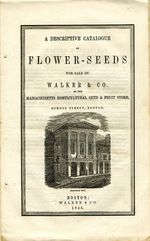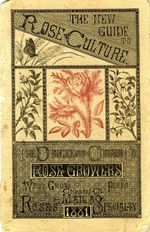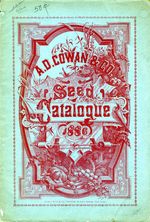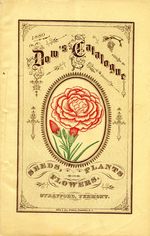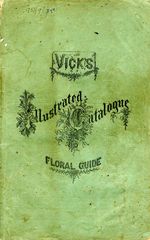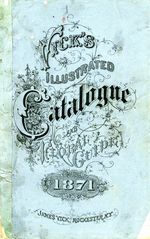The OSU collection has a small number of seed and nursery catalogues from before 1850, and few of those contain illustrations. On the covers of the Walker & Co and Azell Bowditch catalogues, a small engraving shows the first Massachusetts Horticultural Society Hall, where their seeds were sold. Several of Joseph Breck’s catalogues from the 1840s contain a small engraving of a farm or a garden scene with a greenhouse1. His agricultural warehouse catalogue also has engravings of machinery. Merchants might not yet have been financially able to commission artists to illustrate less expensive items, so there are no illustrations of seed or plant varieties in his catalogues of the period. In the following decade, more illustrations of individual varieties appeared in catalogues that were components of larger works such as books or almanacs.
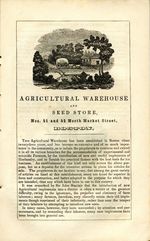
Joseph Breck & Co.'s Catalogue of Horticultural and Agricultural Implements and Tools. 1845. (Click for more images)
Improvements in rail, mail, and printing technology, as well as the end of the Civil War fostered growth and competition in the mail order industry. Printing costs decreased; covers became more elaborately designed, and illustrations of individual seed and plant varieties become much more common.2 Engraved covers of catalogues from after the Civil War tend to have a variety of elaborate letters, a patterned border, and imagery such as twining vines on rustic trellises, butterflies, cornucopias including corn and tomatoes, cherubs, or a fine lady admiring her flower garden. Some of the engravings were printed in colored ink.
James Vick, in his 1871 catalogue, discusses the difficulties in finding “artists who understood and loved flowers”. To improve the quality of illustrations, he hired his own engravers to produce his catalogue of that year. Several examples of the accurately-rendered and beautifully-composed engravings of both flowers and vegetables from the catalogue are scanned below.
Notes
- The garden scene with the greenhouse engraving was also used on Joseph Breck’s Agricultural Warehouse and Seed Store catalogue of 1838 in the National Agricultural Library collection.
- For more information on British catalogue illustration in this period see Brent Elliott. Nursery Catalogues. Royal Horticultural Society. Available at http://www.rhs.org.uk/About-Us/RHS-Lindley-Library/Projects/Nursery-catalogues/Dr-Brent-Elliott

